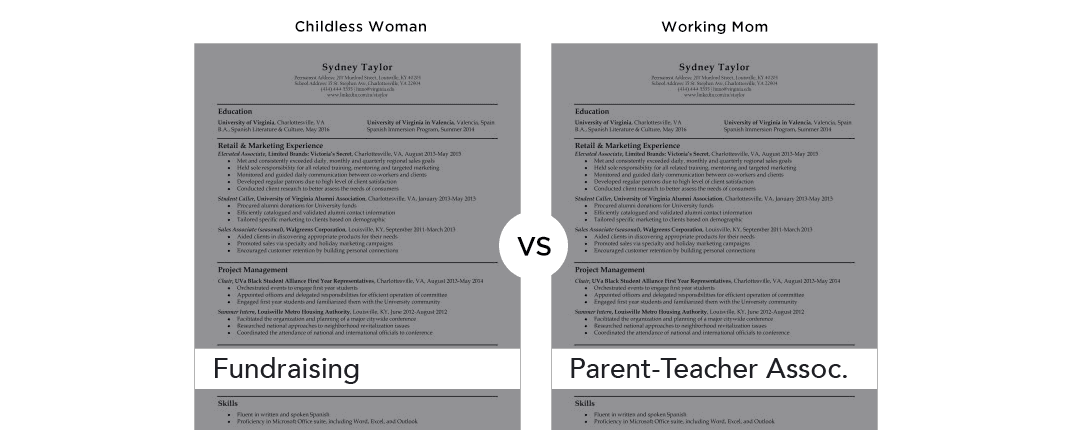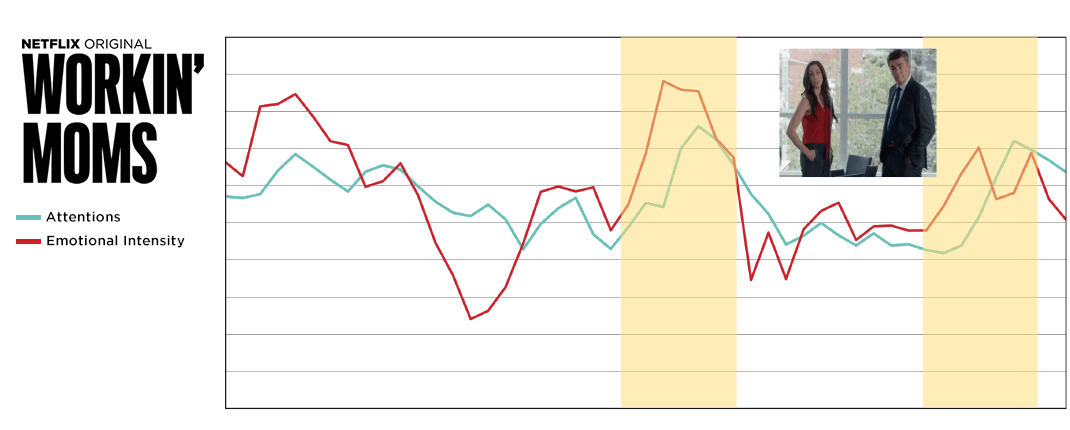A SPARK Neuro X Advertising Week Collaboration
There was a time, not so long ago, when being mother meant staying at home. (Not to mention doing all the cooking, cleaning, and caring for children…all while looking stylish).
Not anymore. *wink*
Today, more women are remaining in the workforce after having kids. As of 2018, 71.5% of mothers with children under 18 either had a job or were actively searching for one![1]
These trends are encouraging. But even today, mothers in the workforce face biases that suggest the past is still very much with us.
The Motherhood Penalty
The gender pay gap makes clear that bias reaches in the workforce: Women make, on average, 82 cents for every dollar men make[2]. But working mothers face a double-disadvantage. In fact, the pay gap between mothers and working women without children is even larger than that between women and men[3].
In a 2007 study, researchers set out to learn why. Each participant was given a pair of resumes to evaluate. Both resumes were matched in every respect, except that the two candidates differed in parental status: one resume alluded to being a parent (through PTA meetings, etc), whereas the other one didn’t. Participants read through the resumes then gave feedback on each candidate, including a hiring decision and a proposed salary.

The results revealed a strong penalty specific to mothers. Compared to childless women with matched resumes, mothers were:
- Described as less confident and committed
- Offered a lower salary (by an average of ~$11,000)
- Recommended for hire half as often as childless women
Evaluations for male candidates showed no such bias. In fact, fathers were more likely to be recommended for hire compared to childless men[3]!
Mothers Feel the Bias
Even when employers try to enact family-friendly policies, working mothers are still affected by societal perceptions. A recent study examined the relationship between stereotype threat (the concern that others judge you using negative stereotypes) and the likelihood of using family-friendly policies for working mothers. The results showed that working mothers were less likely to utilize family-friendly policies when they felt threatened by stereotypes about being a mother[4].
The bottom line? Although working mothers make up more of the workforce than ever, they face consistent negative societal perceptions.
A Glimmer of Hope
Last year, SPARK Neuro partnered with Refinery29 to investigate how audiences engage with content that challenges harmful societal norms. The results found that overall, stereotype-challenging content generated higher viewer engagement and increased purchase intent for advertised items and brands.
Given these findings, we wanted to understand:
- How does the media currently portray working mothers?
- How do audiences engage with portrayals of working mothers that combat the negative stereotypes placed upon them?
SPARK Neuro partnered with Advertising Week to find out!
SPARK Neuro X Advertising Week Study: Perceptions of Working Mothers
At SPARK Neuro, we use a suite of neuroanalytic methods that include traditional survey and interview questions, subconscious measures of behavior and memory, and neuroscience tools measuring brainwaves. Together, they provide a comprehensive assessment of viewer attention and emotional intensity on a second-by-second basis.
For this study, we recruited from the general population to understand how society as a whole responds to content featuring working mothers. We tested 54 participants ranging in age, gender, occupation, and parental status in our NYC lab.
SPARK Tested Content
The first thing we learned is that it’s hard to find any content with working mothers in it! After scanning through commercials for hours, we were able to come up with two pieces of content that portrayed a working mother both as committed to her child and to her career: a Chase commercial with Serena Williams discussing her return to the courts, and a clip from Netflix’s Workin’ Moms. We also threw some other commercials into the mix to create a naturalistic viewing environment for participants.
Results
When it came to free recall (a common measure of ad success), participants remembered the Chase ad more than any other commercial. This shows that Serena’s story stuck with the audience—but why?

The data, shown in the video below, revealed several moments that grab the audience’s attention.
See how attention (the green line) rises at the introduction of baby sounds? Throughout the ad, moments where Serena’s baby and mothering skills are showcased and interspersed with her comeback to tennis led to spikes in attention. Audiences were interested in more than just Serena’s tennis skills—they were engaged by both aspects of her life.
But with 23 grand slams under her belt, Serena is not exactly an ordinary working mother. That’s why we also studied viewers’ reactions to Workin’ Moms, a Netflix comedy about the daily struggles that moms at desk jobs face.
>
Like the Chase ad, engagement spiked when the show referenced both aspects of the main character’s life: as a mother and as a hard-working employee. Engagement peaked when the main character, who was just returning from her maternity leave, made a joke to her male boss about pumping in the office. There is truth in comedy, and turning a non-glamorous aspect of working motherhood into a comedic reference captivated viewers.
The Bottom Line
Our research shows that across age, gender, and parental status, audiences engage with content that portrays working mothers as women who can do it all. They’re women who are strong, fearless, nurturing, committed…and aren’t afraid to talk about pumping in the office.
Media can help viewers understand that working mothers aren’t any less committed to their jobs than fathers or childless people. It’s time for us to shift the narrative. Viewers are ready. We’re ready.
What will you do?
Citations
- US Department of Labor, Bureau of Labor Statistics. (2019). Employment characteristics of families summary.
- U.S. Census Bureau. (2019). Current Population Survey, Annual Social and Economic (ASEC) Supplement: Table PINC-05: Work Experience in 2018 – People 15 Years Old and Over by Total Money Earnings in 2018, Age, Race, Hispanic Origin, Sex, and Disability Status. Retrieved 10 September 2019, from https://www.census.gov/data/tables/time-series/demo/income-poverty/cps-pinc/pinc05.html
- Correll, S. J., Benard, S., & Paik, I. (2007). Getting a job: Is there a motherhood penalty?. American journal of sociology, 112(5), 1297-1338.
- von Hippel, C., Kalokerinos, E. K., & Zacher, H. (2017). Stereotype threat and perceptions of family-friendly policies among female employees. Frontiers in psychology, 7, 2043.

